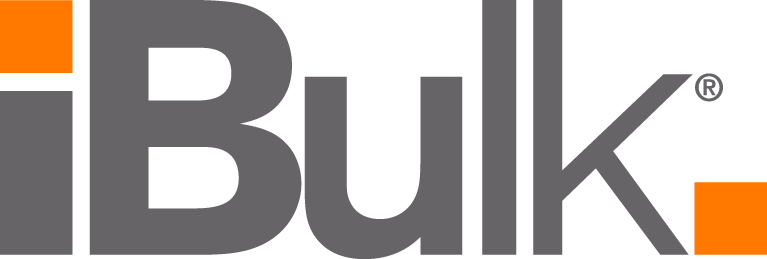Fluid Bed Sand Drying Plant
Why you should consider replacing your rotary dryer
Carrier Vibrating Fluid Bed (VFB) dryers offer a host of advantages for drying solids. These dryers provide simple, one-step processing, high-quality product, high operating efficiency and low maintenance when compared to other types of drying systems. iBulk® has assisted many companies in moving from inefficient rotary dryers to VFBs. These moves have resulted in increased yields and lower operational cost of their original process. The added benefit is the inclusion of cooling in the same unit. We have multiple references where the customer's gas cost have reduced by 25-30%, and then there is the benefit of reduced maintenance cost compared to a rotary.
Environmental
EPA compliant
Mines department compliant
Reduced noise pollution
Reduced dust emissions
Reduced energy consumption, in turn, reduced greenhouse footprint
Who Is It For
Carrier Dryers can be used to dry a wide variety of products from fine sand to pebbles and gravel. We look forward to discussing your application and providing solutions that can deliver the required tonnages for your product range.
Lower Energy Consumption
Due to the economic and environmental cost of energy, many sand plants have turned to Carrier Fluid Bed Dryers with great success. We can achieve tremendous savings due to the efficient heat transfer by combining vibration and the fluidisation process.
The material is in intimate contact with the hot process gas and becomes fluidised, reacting almost like a boiling liquid.
Automation
iBulk® has worked with specialists' providers of electronic equipment and developed a PLC system that can be offered as a standalone system or integrated into your existing SCADA Systems. We can bring together the various pieces of equipment required for the drying plant, including dust collectors, feeders, screeners, conveyors and other ancillaries.
Maintenance
When compared to rotary dryers, the VFB has minimal maintenance requirements. There are no lifters or internal refractory linings compared to those required in rotary dryers. Also, since the sand is fluidised, there is minimal wear on the fluidising bed. Rotary dryers have expensive metal tyres, riding rings and bearings.
Installation and Commissioning
Limited civil work is required to install a VFB as they are supported on isolators that remove 99% of the dynamic loading that occurs through the vibration process. In most instances, a conventional factory floor has proven adequate. Commissioning is performed by iBulk® engineers who have extensive hands-on experience when it comes to setting up the full process. Once installed the dry product becomes available within a few hours of the commissioning process.
Applications iBulk® designs for include:
Silica sands used in glass manufacture, Foundry sand, Frac sand for hydraulic fracturing, Synthetic grass, Rail traction sand as well as Heavy Minerals sand including Rutile, Zircon and Ilmenite.
The advantages of Vibrating Fluid Bed Dryers are clear:
Efficient heat transfer with low energy consumption.
Product is continually mixed to promote uniformity.
Fragile products can be handled with negligible particle degradation.
No moving parts in contact with the product. Maintenance and abrasive wear are minimised and equipment is easily cleaned.
Product retention times and gas temperatures are easily adjusted to vary the finished product condition.
Fluid beds can be multifunctional. Drying, cooling, classifying and calcining can be done in one unit.
Lower fluidising velocities are required, making the system more energy efficient.
Easy to clean and maintain.
Recirculated gas and closed-loop systems available for improved efficiency or solvent recovery.
Clean-in-place and fire suppression systems available where necessary.
Carrier’s patented Delta-Phase® Drive option permits on-line adjustment of angle of vibration and precise retention time control.
Sanitary construction available.
Key Features
Minimal maintenance
Gas/fuel saving
Efficient heat transfer with low energy consumption.
The product is continually mixed to promote uniformity
Turn-key solutions
Operator safety
PLC integration
The product can be cooled to assist in the downstream process
Can be installed on a standard slab as minimal vibration is transmitted from the unit
EPA compliant
Mines department compliant
Reduced noise pollution
Reduced dust emissions
Reduced energy consumption, in turn, Reduced greenhouse footprint.
Reduced maintenance costs.
Product retention times and gas temperatures are easily adjusted to vary the finished product condition.
Why iBulk ?
We have a proven track record designing, building and commissioning drying plants ranging from 1 to 50 ton per hour. All engineering is performed in-house, and all equipment is locally manufactured and supported right here in Australia.
Case Studies: Riverside Sands
Riverside Industrial Sands are based alongside the Brisbane river, next to numerous high-end apartments. This presented us with seven essential requirements that we needed to deliver.
Increase the output capacity from 10tph to 30tph
Control the noise output so that there is no increase on total ambient noise
Reduce dust emissions, essential in the residential area
Reduce energy consumption
Reduce maintenance costs of stoppages and repairs
Deliver dry cool screened sand
Complete a fast installation to avoid stock run-out
iBulk® designed and built a customised plant that met all Riverside’s requirements, exceeded client’s expectations. A key advantage to the old rotary system is the ability to run continuously, which meant the customer was able to reduce the number of drying hours needed per week, resulting in substantial cost-savings.




